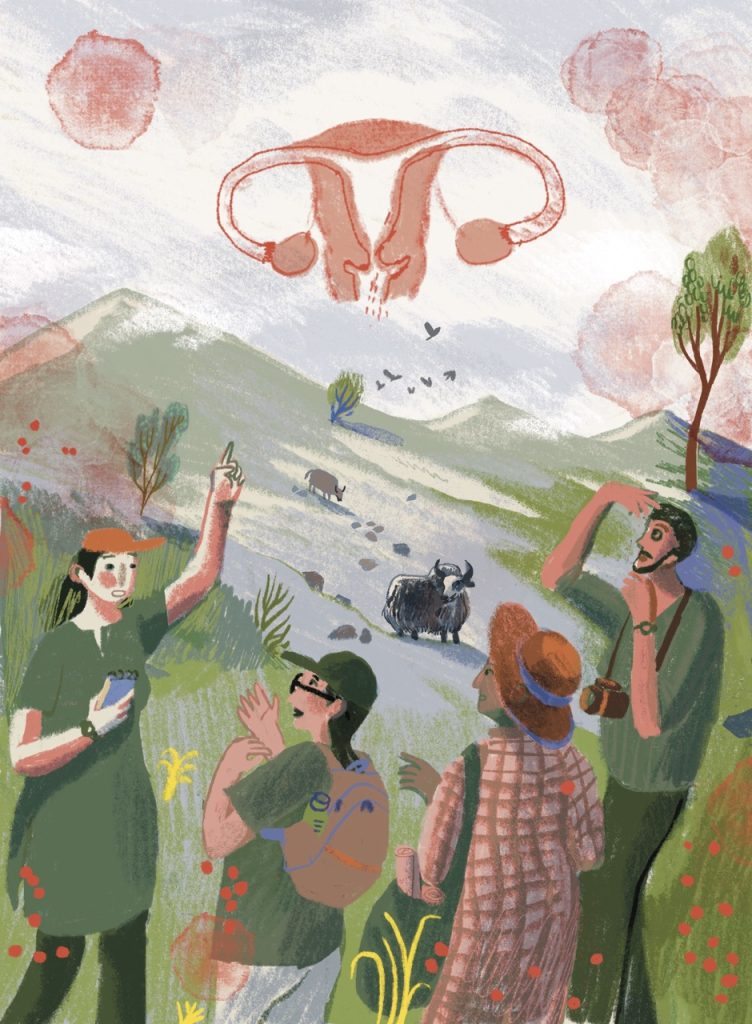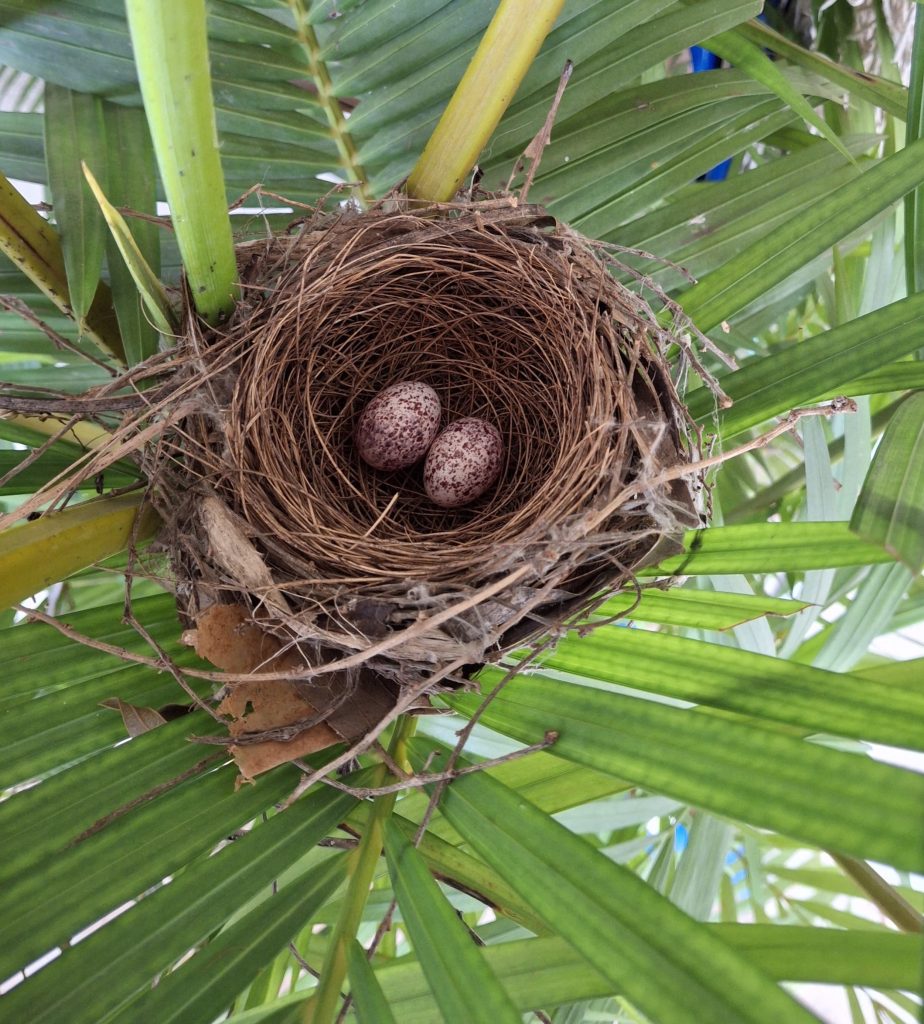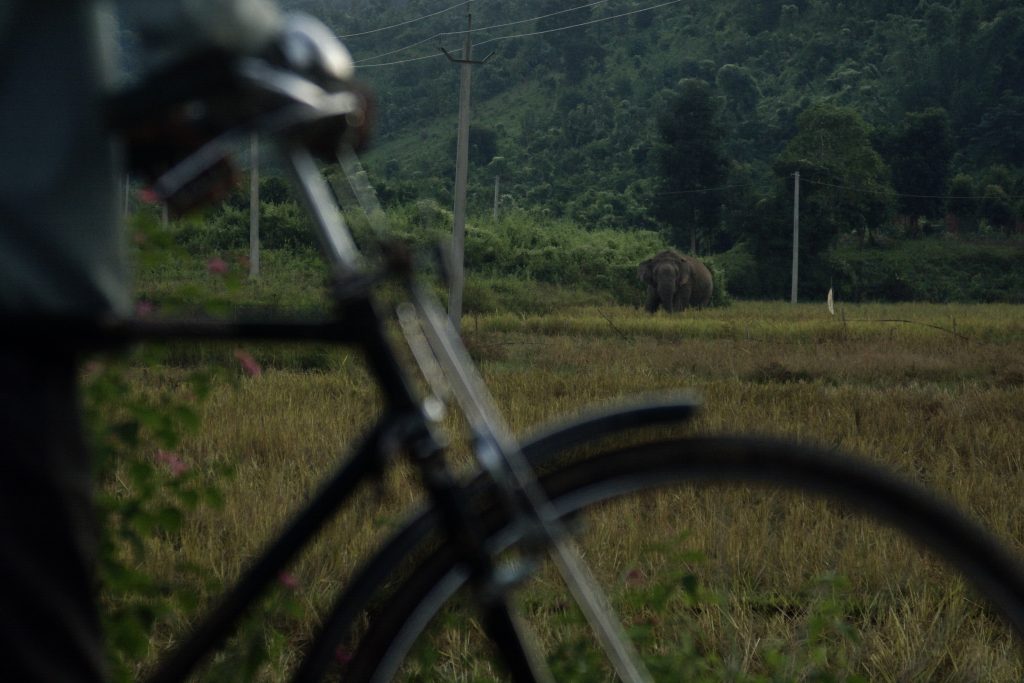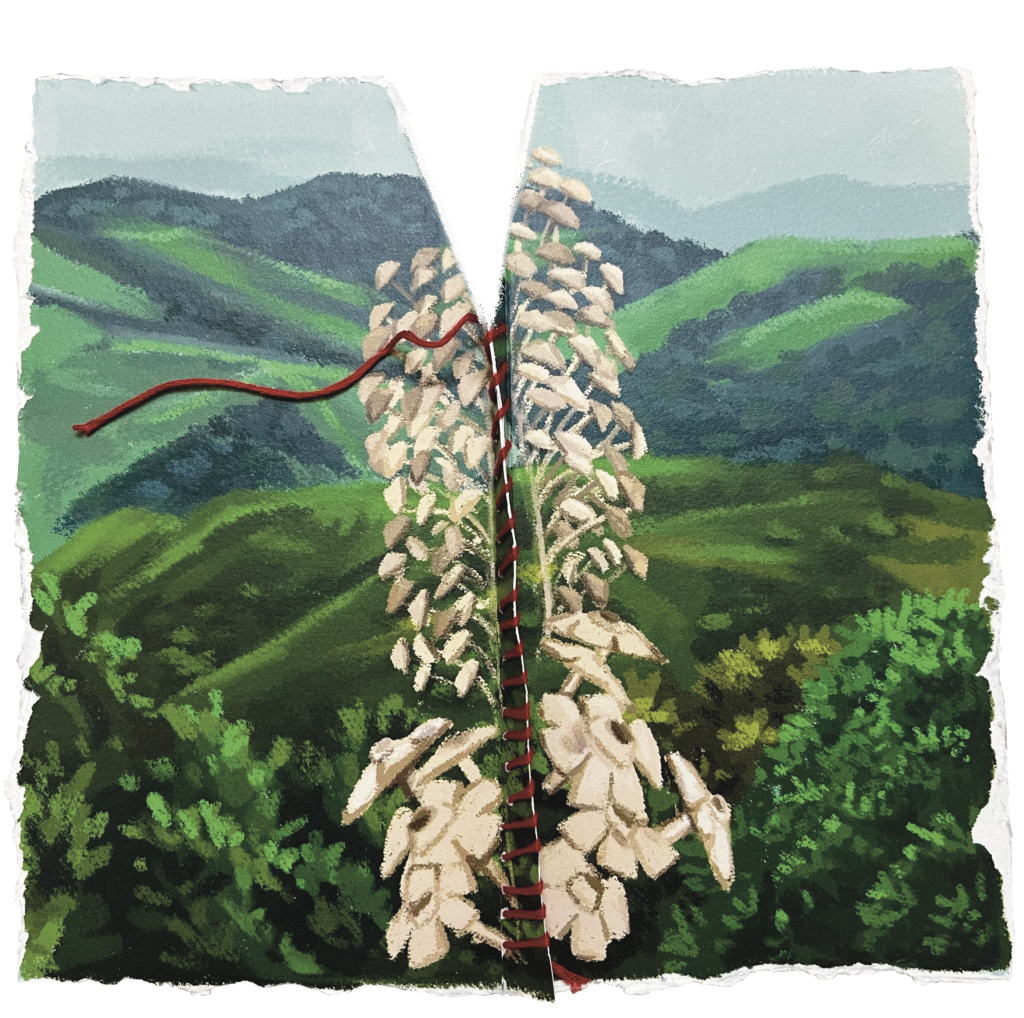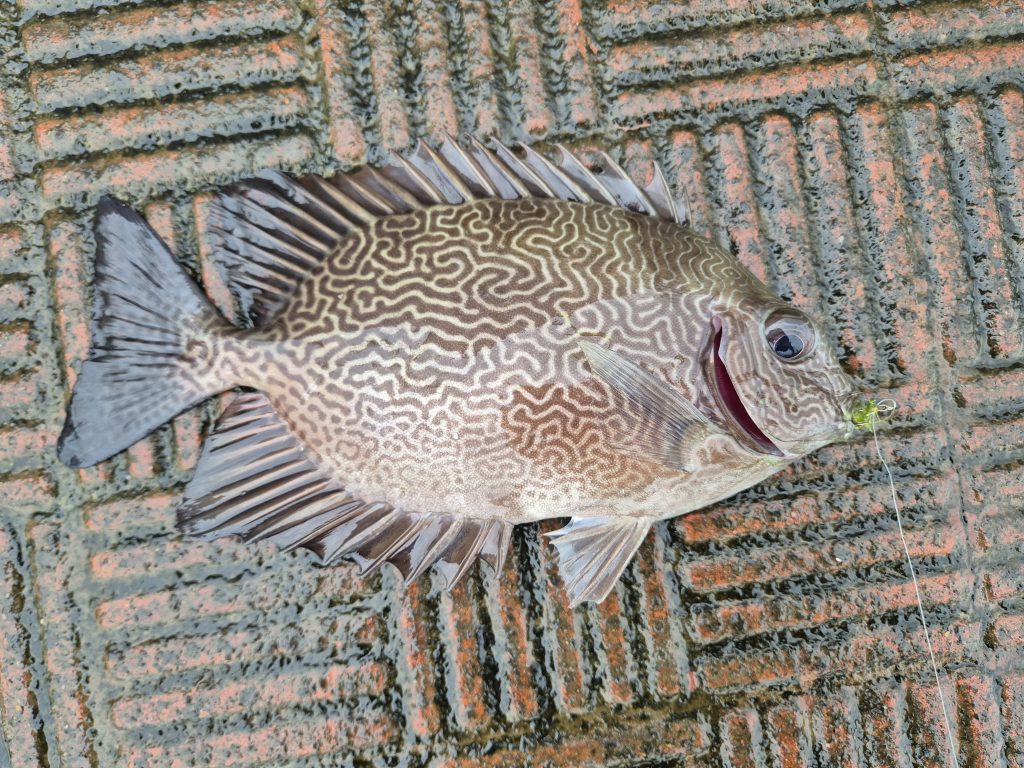Feature image: Forest Spreadwing(Lestes dorothea)
The Travancore reedtail (Protosticta ponmudiensis) is a damselfly. It was first described in 2015 from the Ponmudi hills in the Thiruvananthapuram district of Kerala, India, and soon forgotten by all. This is not an unusual fate for an odonate—the collective term for dragonflies and damselflies—in the prevailing conservation milieu. Although they were one of the first animals to conquer the skies, some 300 million years ago, many odonate species in India, including the Travancore reedtail, remain ‘Data Deficient’ in the IUCN Red List. Despite their important role in the food web as prime predators of invertebrates in most ecosystems, dragonflies and damselflies do not receive the conservation attention they deserve. I started studying odonates because they reflect the health of the environment. Their short life cycles coupled with sensitivity to anthropogenic disturbances, such as pollution and deforestation, make them excellent bioindicators. Officially, I study the diversity and ecology of odonates in the Kole wetlands, a Ramsar site in central Kerala. Unofficially, I chase after odonates wherever I can find them, including forests.
My passion has led me to a few amateurs who love observing and documenting odonates. I first met Reji Chandran—a professional event photographer—when I was trying to make field identification keys for odonates found in Kerala. He was a passionate ‘odonutter’, who lived in Aryanad village, adjacent to Peppara Wildlife Sanctuary. Reji’s backyard was wonderfully rich in odonate species thanks to its proximity to the Agasthyamala hills in the Western Ghats, a biodiversity hotspot. He had recorded close to a hundred species from his surroundings. After months of fieldwork and discussions over the phone, we were able to make field keys for the identification of over 20 confusing odonate species.
Afterwards, I was unable to visit Reji’s village due to the prevailing COVID-19 travel restrictions. But there was finally a window of opportunity in September 2021, when I booked a train ticket to Trivandrum Central without thinking twice. Reji had planned an expedition to the Ponmudi hills in search of the Travancore reedtail. His previous (and frequent) visits had been unsuccessful, but he believed that with our combined effort, we would be able to find the skittish damselfly.

On the first day, I requested to see Reji’s ‘backyard’, which consisted of rubber plantations owned by his neighbours. The plantations had luxuriant wild undergrowth and a few streams flowing through them, and were separated from Peppara Wildlife Sanctuary by the Karamana River. Thus, we were hiking through an ‘ecotone’—the edge between two kinds of habitats. Ecotones host rich biodiversity because they attract species from both habitat types. Further, they support species which prefer such edges. No wonder Reji found more odonate species here than recorded anywhere else in Kerala— it was the ecological phenomenon called ‘edge effect’ in action!
I was amazed by Reji’s knack for locating odonates. He would brush aside some understorey vegetation, point to a dry twig on a tall tree and there it would be—a Goan shadow dancer (Idionyx gomantakensis). At the point where a stream met the Karamana River, he made me sit on my haunches and showed me a damselfly that gave me goosebumps—the red-striped bambootail (Elattoneura souteri). Both species are rare and endemic to the Western Ghats. Odonates show high microhabitat specificity and Reji knew exactly where each species could be found.
At the edge of the river in a Myristica swamp—tree-covered wetlands in the Western Ghats that are dominated by trees belonging to the family Myristicaceae—we spotted a brilliant blue pair of Myristica sapphire (Calocypha laidlawi) males engaged in an aerial fight for territory. The successful male would mate with a female, who would then lay eggs in plant debris floating in the slow-flowing water. In a few days, tiny aquatic predators would hatch out from the eggs.
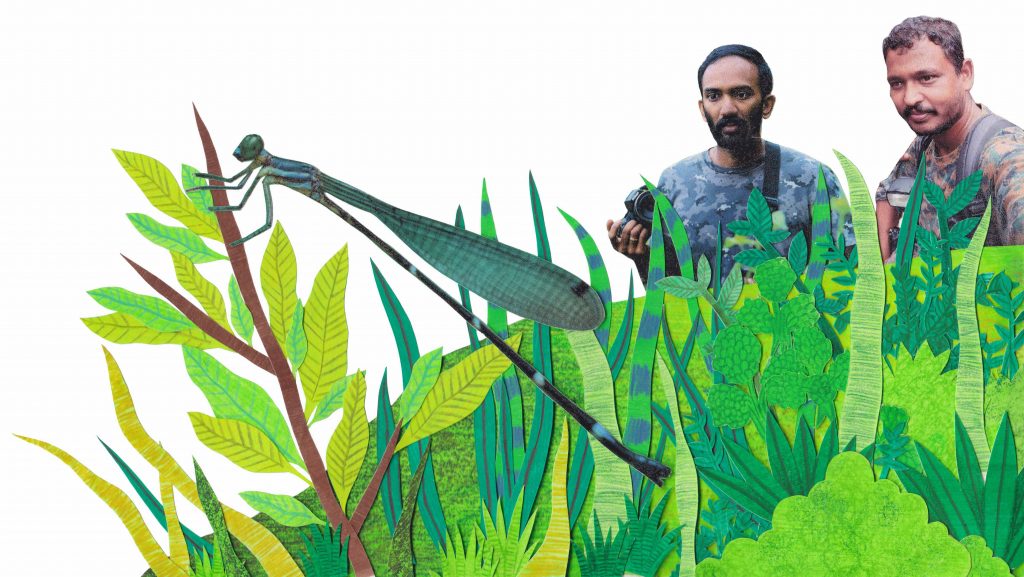
Myristica swamps once formed a large hydrological network all along the Western Ghats, but are now fragmented and exist as small, isolated pockets. These threatened habitats host species like the Myristica sapphire, found nowhere else in the world.
Hours passed by as we gawked at one odonate after another and it was twilight by the time we started heading back to the village. Early next morning I woke up to Reji’s palpable excitement. Ponmudi was an hour away by motorbike. In a rocky stream halfway up the hill, we chanced upon a Saffron reedtail (Indosticta deccanensis)—a brightly coloured shade-loving damselfly, endemic to the Western Ghats. It was a close relative of the Travancore reedtail and with its saffron body and azure blue face, more attractive to the eyes. I was seeing it for the first time. Perhaps we would find the Travancore reedtail after all! The Saffron reedtail sighting awoke an intense sense of expectation in me. We followed the road uphill and arrived at a spot where the stream banks had a thick cover of shrubs and saplings. The flow of the stream was slower and the shade offered by the plants was denser. Here, we began a thorough search for our quarry.
Reji stepped with great precision, eyes scanning the undergrowth for any sign of the reedtail. My feet sore from the previous day’s leech bites, I limped after him. We had taken some twenty steps when Reji paused suddenly, turned around and gave me an “I told you so” look. It was the Travancore reedtail—a female, delicate and green-eyed beauty with a thread-thin body! The body was mostly black with bluish-white bands. We only managed to take a few photographs in the dim light before she was chased by a male. We gaped open-mouthed as they flitted away, across the stream and deep into the forest. We had just encountered one of the rarest odonates of the region. Since all its sightings have been from the Ponmudi hills, it could well be a spot endemic—found only at a single location on the globe.
Our mission accomplished, we thought of paying a quick visit to the famed hilltop of Ponmudi before returning. Though the ride through the mist and the panoramic view from above were mesmerising, we were appalled by the callousness of the large crowd of tourists. They were shouting, entering restricted areas, and dumping plastic waste in patches of once-pristine shola forest. None of them seemed to realize the ecological value of the Ponmudi hills. When we descended the hill, it was with mixed feelings. We were elated to have found the Travancore reedtail, but worried about its future.

Further Reading
Gossamer Wings: Damselflies and Dragonflies of the Western Ghats. RoundGlass Sustain. https://sustain.round.glass/photo-story/damselflies-dragonflies-western-ghats/. Accessed on 18 November, 2021.
Corbet, P. S. 1999. Dragonflies: Behaviour and Ecology of Odonata. University of Edinburgh, UK.

